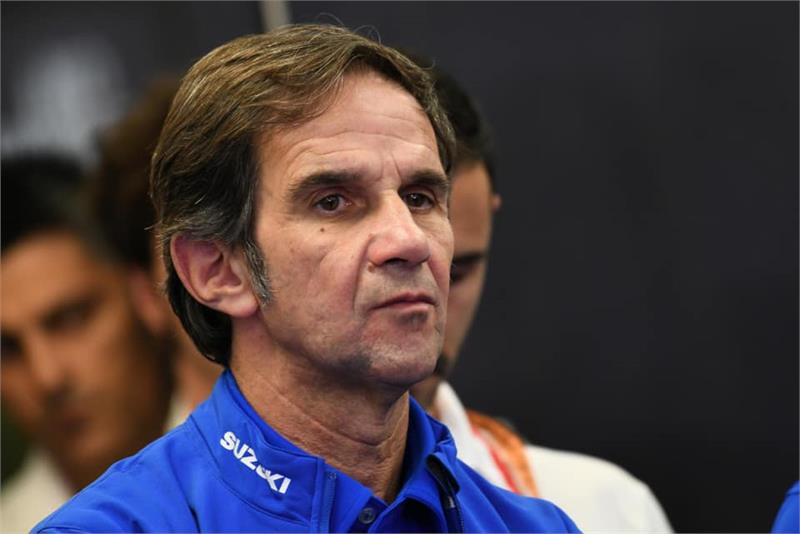What shapes MotoGP’s pathway in an ever-changing scene
Like the rest of the world, MotoGP is being rocked by the impact of coronavirus and health measures installed to fight the spread of COVID-19.
MotoGP organisers were one of the first sporting bodies to make a call on changing its 2020 calendar amid the coronavirus outbreak, with the cancellation of the premier class opener in Qatar followed by the postponement of the entire Thailand MotoGP initially set to be held this weekend.

Like the rest of the world, MotoGP is being rocked by the impact of coronavirus and health measures installed to fight the spread of COVID-19.
MotoGP organisers were one of the first sporting bodies to make a call on changing its 2020 calendar amid the coronavirus outbreak, with the cancellation of the premier class opener in Qatar followed by the postponement of the entire Thailand MotoGP initially set to be held this weekend.
As the coronavirus situation rapidly worsened in Europe and started spreading west, postponements to the Argentina and United States rounds were duly confirmed along with a reshaped provisional MotoGP calendar including a finale of eight rounds across 10 weeks from late September to the end of November.
MotoGP’s initial response has been praised, while Dorna chief Carmelo Ezpeleta hasn’t ruled out any possibilities to deliver a full championship, which has raised a variety of possible solutions from racing without spectators to holding two races over certain race weekends to bulk out the season.
To date, the 2020 MotoGP season is set to roar into action again at the start of May with the Spanish Grand Prix at Jerez followed by the French and Italian rounds later in the month. But MotoGP teams and riders are bracing for further delays.
French President Emmanuel Macron has ordered people to stay at home while its land boarders are closed and non-essential movement in and out of the country has been suspended for at least 15 days. Both Italy and Spain are approaching near total lockdown with the majority of flights cancelled.
As a result, all of these rounds carry a significant asterisk due to the various current travel bans and closures in place at each country which means for one reason or another if those races were held in the immediate future they could not go ahead.
Of course, there is still six weeks to go until the Spanish MotoGP so the situation naturally has time to improve but it leaves a limited timeframe to slow the coronavirus outbreak sufficiently but the risk of a second outbreak by reopening international travel paths will remain a major concern.
MotoGP’s early action has given it the initiative and some much-needed lead-up time to plan for all options with an overriding expectation that, against optimism, these events are also at risk of postponement.
With Formula 1 organisers facing a similar prospect as it prepares for its own European season, with its next race, the Dutch Grand Prix, planned for the same weekend as the Spanish MotoGP, both come up against the same challenges and questions.
But fellow two-wheel championship, FIM Motocross world championship, has inadvertently become a precursor to MotoGP’s own calendar changes due to its previous race schedule postponements.
Even today (March 18) MXGP officials have rearranged its upcoming Italian and Germany rounds, initially planned for May but now pushed back to July and August respectively, with its next round set to take place in Russia in early June.
Further afield the UEFA European Championship football finals tournament - due to be held in 12 cities from June 12 to July 12 - has just been rearranged for a June 2021 slot and the French Open has also been postponed until September. The sporting events around MotoGP’s own fixtures are gradually being stripped back.
Speaking back at the Qatar opener, Ezpeleta made it clear the primary target was to complete the highest number of races possible while he already has the backing of the FIM to potentially run into January 2021 if more time is required.
“Contractually with the FIM there are 13 races but our aim is to do 19 remaining races,” Ezpeleta said. “There are possibilities even in the worst case, even with more cancellations and that we will have time. Maybe we will race in hot countries at Christmas!
“We are like that, our duty is to make races and we will do races. Maybe they need to postpone the FIM Prize Giving ceremony but the most important thing for us is to make races.”
While the best-laid plans are what MotoGP is striving for, ultimately its efforts would be dictated by what the national governments for each race decide.
That has already been felt at the Qatar MotoGP when Moto2 and Moto3 could run thanks to all of its teams and riders already being in the country after a pre-season test, but the premier class could not compete due to 14-day quarantine rules on any personnel who had been in Italy two weeks before arriving.
Any repeat or similar situations will be a trip hazard for MotoGP in the knowledge it will not race without a complete grid of teams and riders.
“Since the coronavirus problem began, we’ve been following the instructions of each government, we have been in close contact with the promoters in Austin and Argentina and when the authorities said it wasn’t possible to do it now, we talked to other Grands Prix to try and accommodate,” Ezpeleta said last week.
“Now the calendar is ok, if everything continues as it is.”
MotoGP organisers still have time on their side but with each passing day and tighter restrictions the situation around further delays becomes almost inevitable.
With the sport’s officials prioritising a maximum number of races, even with help through unconventional methods, its path to that target is becoming trickier.

